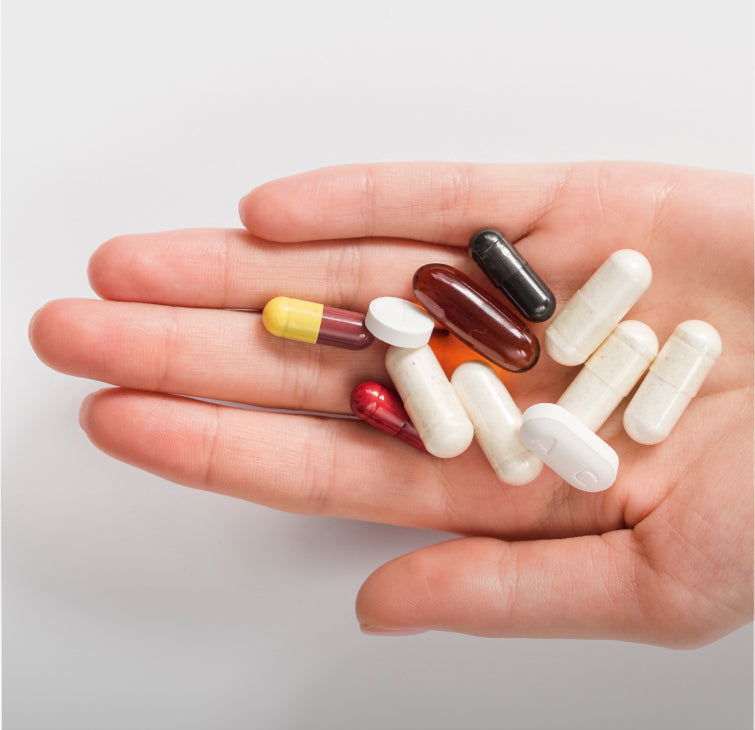Vitamin A, or retinol, is a nutrient essential for good daily health, although its role is often misunderstood.
So what is it really for: Eye health, skin health, iron metabolism ?
In this article, we will review all the information related to this vitamin and answer the following questions:
- What are the benefits and role of vitamin A?
- Is there a risk of deficiency?
- What are the richest foods?
What is vitamin A?
The term vitamin applies to any molecule essential to the body, which acts in small quantities on target organs and which cannot be synthesized by the body. They must be provided by food. Hormones meet the same criteria but are produced by the body.
Vitamins are often divided into two categories based on their solubility, either in water or in oils (vitamins A, D, E, K). This distinction gives these vitamins different properties, particularly with regard to their storage in the body.
Vitamin A is therefore an organic substance essential to our metabolism.
However, it was only formally identified late.
Vitamin A: the first vitamin identified
Two years after the creation of the concept of vitamin, vitamin A was identified, which explains the attribution of the letter A.
In 1913, several American researchers, including Elmer McCollum and Marguerite Davis, provided evidence of the existence of a fat-soluble substance essential for human health. They demonstrated that animals deprived of this substance developed eye infections. They then named this substance fat-soluble A.
However, it was not until 1931 that the Swiss researcher Karrer succeeded in isolating the molecule and defining its chemical structure.
A fat-soluble organic compound
Vitamin A is an organic compound with no energy value . It is not synthesized by the human body but plays a very important role in it.
Vitamin A is said to be fat-soluble, meaning it dissolves in fats but not in water. It is also resistant to heat and acidity. However, it oxidizes in air and is destroyed by light.
These characteristics are important because they allow it to be absorbed by the small intestine at the same time as lipids. It is then stored mainly in the liver, but also in the epidermis and the retina. It is because it was isolated in this membrane of the eyeball that it is called retinol.
Vitamin A, however, is not a single chemical molecule, but a group of organic compounds with similar characteristics:
- Retinol and its derivatives for the animal world;
- Provitamin carotenoids for the plant world. These are provitamin A, i.e., precursors of vitamin A. The best-known representatives are lycopene, beta-carotene, and zeaxanthin.
It should be noted that 6 mg of beta-carotene is equivalent to 1 mg of retinol and other carotenoids to 1/12 of retinol. This is why nutritional recommendations are expressed in "retinol equivalent" (RE).
However, in some cases such as as in pregnant women and during embryo development in particular, carotenoids do not have the same properties as retinol (see "risks" below).
What is the role of vitamin A?
Vitamin A is involved in many metabolic reactions including:
- Regulation of genome expression: a key role in activating or repressing genes throughout our lives. Vitamin A is particularly involved in embryonic development, cell growth and tissue renewal (epidermis, intestine, mucous membranes, etc.);
- Twilight vision: Retinaldehyde is one form of vitamin A. This photosensitive protein pigment is present in the rod cells of the retina. These are responsible for twilight vision. Specifically, vitamin A undergoes different chemical transformations depending on the brightness. These same transformations generate an electrical impulse interpreted by the brain;
- The normal functioning of the immune system by allowing the differentiation and growth of cells;
- An antioxidant function: vitamin A helps neutralize free radicals.
What are the benefits of vitamin A?
Vitamin A is an essential nutrient for good health throughout life. Its benefits are numerous, particularly for:
- Protection of the eyes and the lens, the deterioration of which can lead to cataracts;
- AMD : Age-related macular degeneration (AMD) affects many patients over the age of 50. It results in a loss of vision in the central part of the retina. The preventive role of vitamin A against this form of limited blindness has been demonstrated;
- Action against cellular aging due to free radicals: stress, anxiety, fatigue, an unbalanced diet or prolonged exposure to the sun are all factors that promote the formation of free radicals. Vitamin A helps to trap these free radicals, and therefore prevent premature aging of cells;
- Stimulation of the immune system .
Finally, some publications attribute it to an action against cancer. To date, a clear link with possible remissions has not been established.
On the other hand, an excess of retinol in pregnant women at the beginning of pregnancy can cause malformations in the fetus, a risk which does not exist with carotenoids.
What are the daily requirements for vitamin A?
Vitamin A intakes are generally expressed in micrograms EAR (retinol activity equivalent) or ER (retinol equivalent).
According to ANSES (French National Agency for Food Safety), the daily nutritional references for vitamin A are:
- 650 µg of ER for a woman;
- 750 µg of ER for a man.
It is important to remember that the Upper Safety Limit (adult) is 3000 µg (10,000 IU) and that children's needs are approximately half those of adults.
As regards children, these same needs are being reassessed by ANSES.
What are the symptoms of a deficiency?
Severe vitamin A deficiency is uncommon in Western countries . However, certain symptoms may be related to a deficiency:
- A decrease in visual acuity when night falls;
- Lower resistance to diseases, bacteria and viruses.
It is worth noting, however, that these two symptoms are not specific to vitamin A deficiency.
To determine the exact origin, it is imperative to consult a health professional.
What are the risks of overconsumption of vitamin A?
Two categories of individuals are particularly affected by the risks of overconsumption: pregnant women and smokers.
For pregnant women, vitamin A plays a crucial role in the proper progress of pregnancy. However, a high overdose of retinol (above 3.3 mg/day or 10,000 IU) represents a risk factor for fetal malformation. This is why pregnant women are advised not to consume liver (veal, beef), which is very rich in retinol.
It is important to note that provitamin A (carotenoids, beta-carotene) do not pose these risks, and the consumption of fruits and vegetables is encouraged during pregnancy.
In smokers, although vitamin A is discussed as a possible treatment factor for certain leukemias (currently under evaluation), studies have demonstrated a correlation between massive doses of vitamin A and an increased incidence of lung cancer in smokers and former smokers.
However, harmful and risky doses are around 20 mg/day over prolonged periods (several months), which is six times higher than the Upper Safety Limit. In practice, it is impossible to achieve such intake levels, even when combining a normal diet and supplements formulated according to the principles of the Recommended Daily Intake (RDI).
What foods are rich in vitamin A?
Like other essential nutrients, vitamin A cannot be synthesized by the human body . Only a balanced diet can cover our daily needs.
However, some foods have higher concentrations of retinol equivalents.
In addition, ultra-processed foods have low vitamin A levels and carotenoids are sensitive to cooking (30 to 70% reduction in content).
Among the foods richest in retinol, we find in particular (in μg RE per 100 g)
- Cod liver oil: 30,000 μg;
- Beef liver: 9442 µg;
- Oily fish: 200 to 300 µg
- Cheeses: 245 to 350 μg;
- Egg: 260 μg.
Among the foods richest in carotenoids, we find in particular (in μg RE per 100 g)
- Parsley: 5360 µg;
- Raw carrot: 1380 µg;
- Swiss chard: 3650 µg;
- Dried apricots: 2160 µg;
- Lettuce: 2000 µg;
- Sweet potato: 1100 µg;
- Cooked carrot: 556 µg;
Why take vitamin A-rich food supplements?
Average vitamin A intakes of the population are generally satisfactory, and vitamin A deficiency is very rarely observed.
When vitamin A supplementation is considered, it must be done with two essential precautions.
The first is to avoid retinol and favor only carotenoids to avoid any risk for pregnant women.
The second is not to exceed the RDA (recommended daily intake), i.e. 700 (650/750) µg of retinol equivalent (RE) or 2000/2500 IU.
That's why we've included it in our Multivitamin and Mineral formula in the form of beta-carotene at 50% of the RDA.
Bibliography:
- EFSA (2015 VA) Panel on Dietetic Products, Nutrition and Allergies (NDA); Scientific Opinion on dietary Reference Values for vitamin A. The EFSA Journal 13 (3): 4028. https://efsa.onlinelibrary.wiley.com/doi/epdf/10.2903/j.efsa.2015.4028 , accessed September 14, 2018.
- Anses (2016) Updating the PNNS benchmarks: Development of nutritional references. Collective expert reports. Scientific edition. https://www.anses.fr/fr/system/files/NUT2012SA0103Ra-2.pdf , consulted on September 11, 2018.
 04 74 03 98 80
04 74 03 98 80









